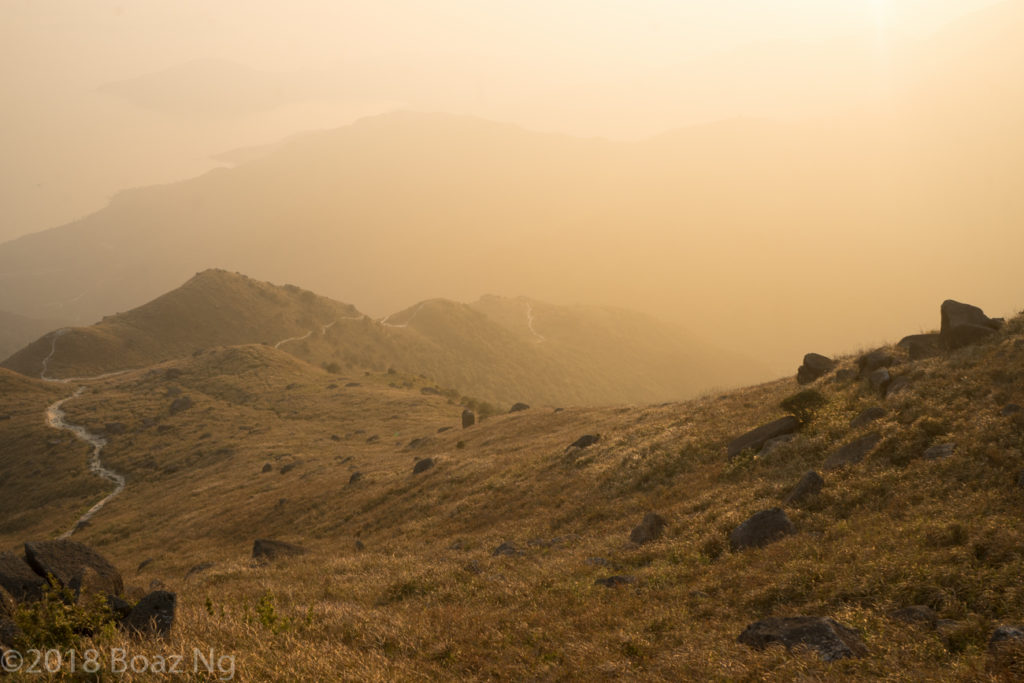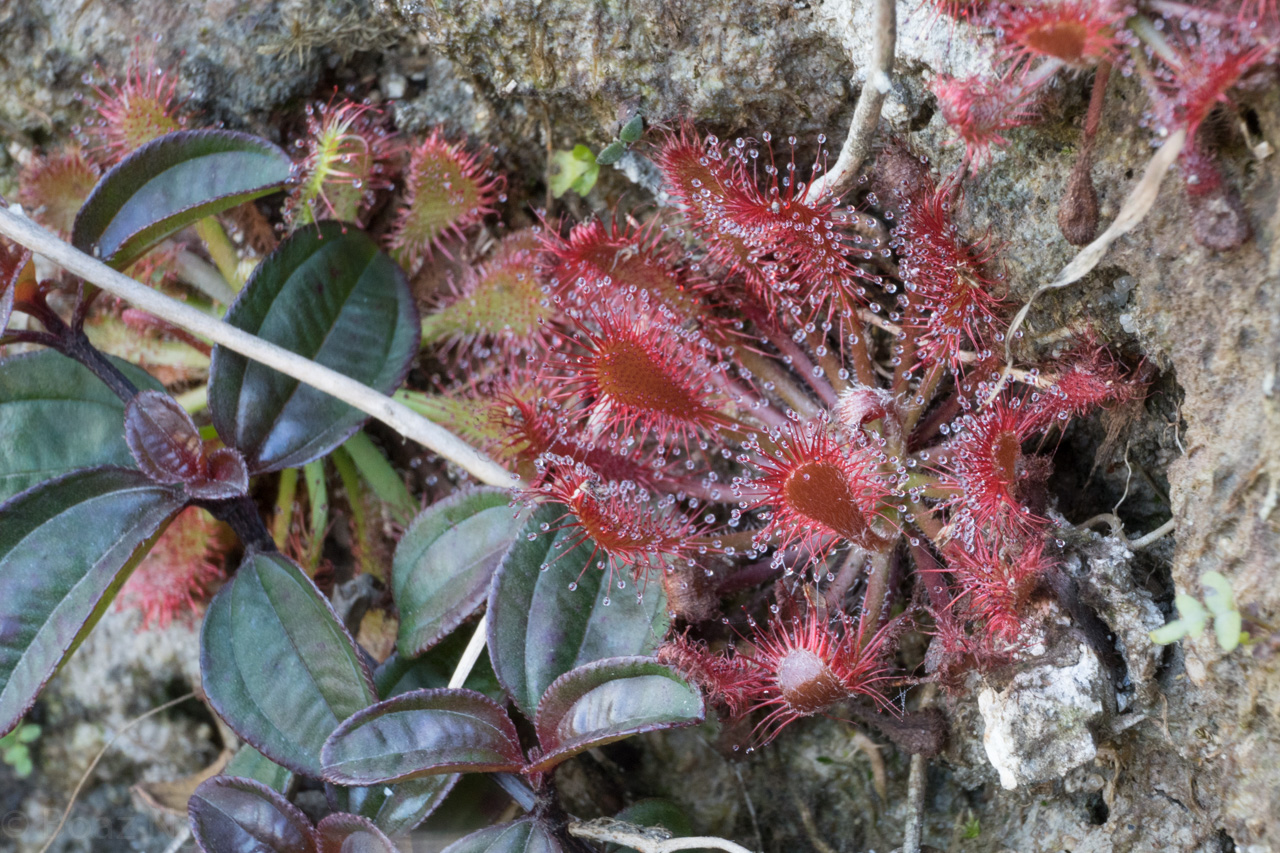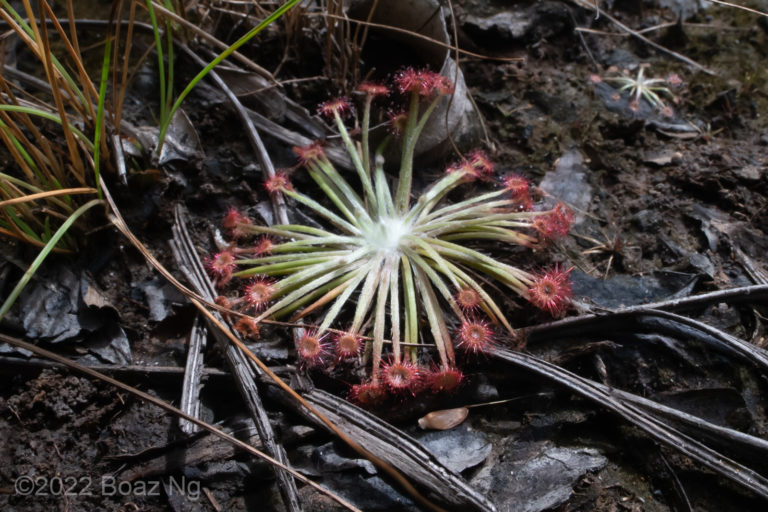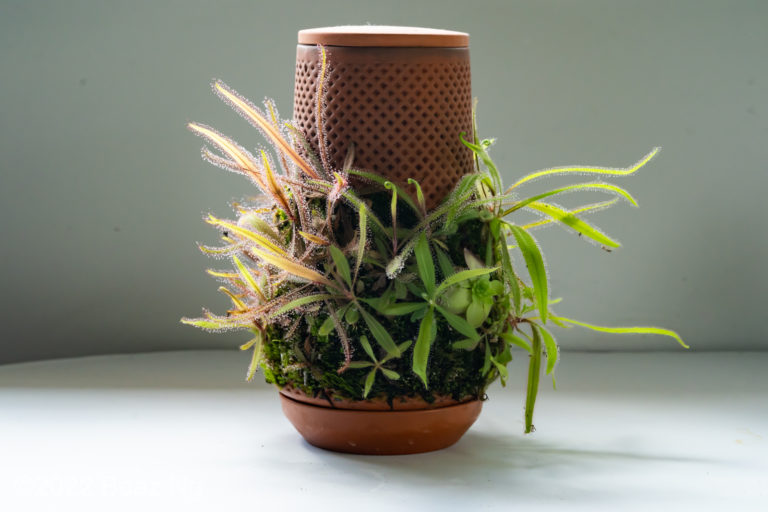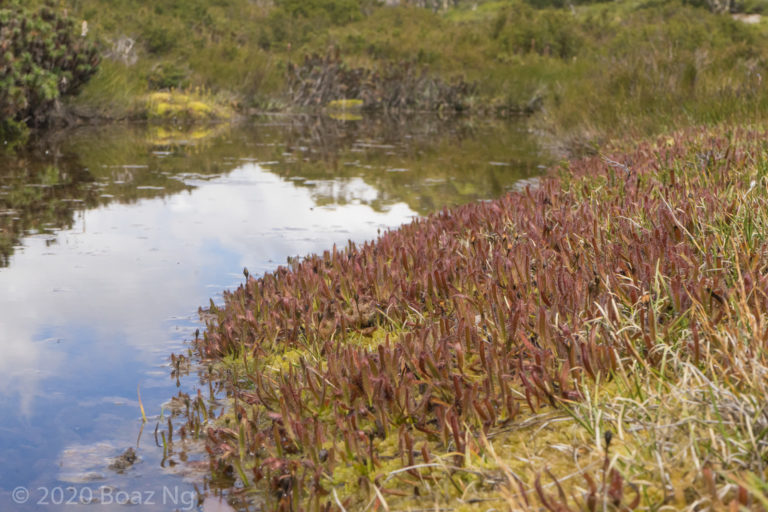Drosera oblanceolata is a species that grows in the South East corner of China and is the country’s only endemic sundew. The form most common in cultivation originates from Lantau Island in Hong Kong. I have seen the plants in the wild a few times and have come to understand how it grows.
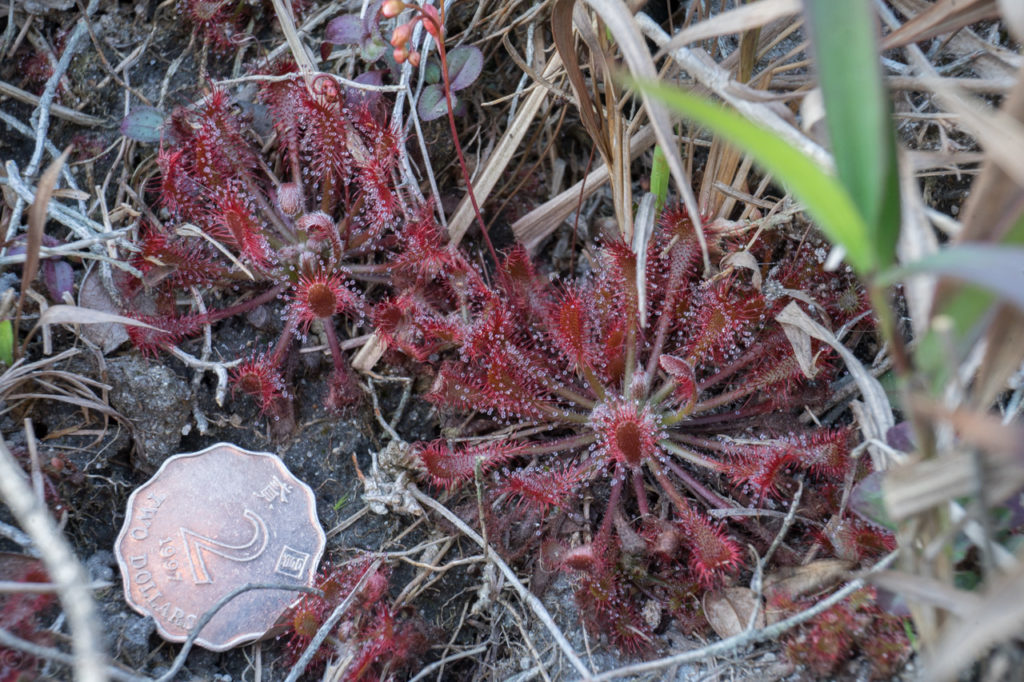
Mature specimens of Drosera oblanceolata are distinguished by its raised rosette, with leaves that elegantly bend upwards to form a crown like structure. The petioles of the leaves are thin but fleshy with dense hairs, and terminate into a paddle shaped lamina. Plants can reach a good size, around 8 cm in diameter. Plants in less than optimal growing conditions adopt a flat posture but retain the shape of their leaves.
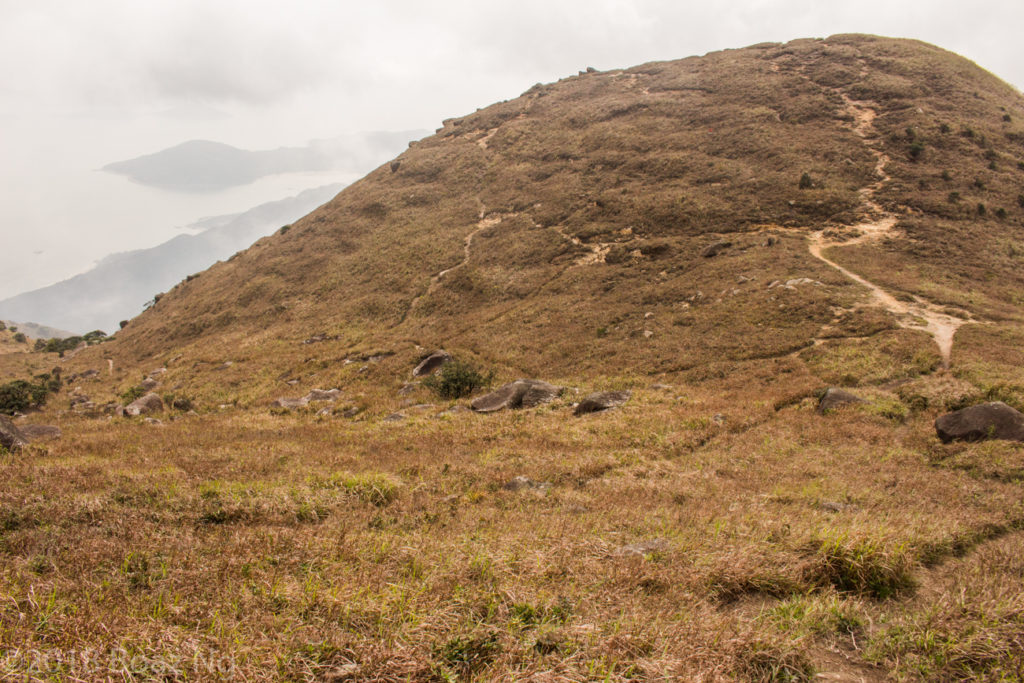
Hong Kong is a mountainous region with granite peaks that rise from sea level to over 900 elevation. Drosera oblanceolata only grows in the highest of these elevations above the tree line, which occurs from around 700 m onwards. Here, rocky, exposed meadows covered short grasses dominate the landscape. Drosera grows where the grass is sparse, such as on the side of trails, rocky outcrops or areas of erosion. The soil consists of a compacted sandy silt. In winter, these peaks are always humid owing to their elevation. On overcast days they are covered in fog whereas on clear days, the meadows receive a large amount of light. The temperature in February is decidedly cool, hovering around the low to mid teens (celsius of course). I’ve only visited the sites during winter so the my climactic observations are probably different the notoriously sticky summer.
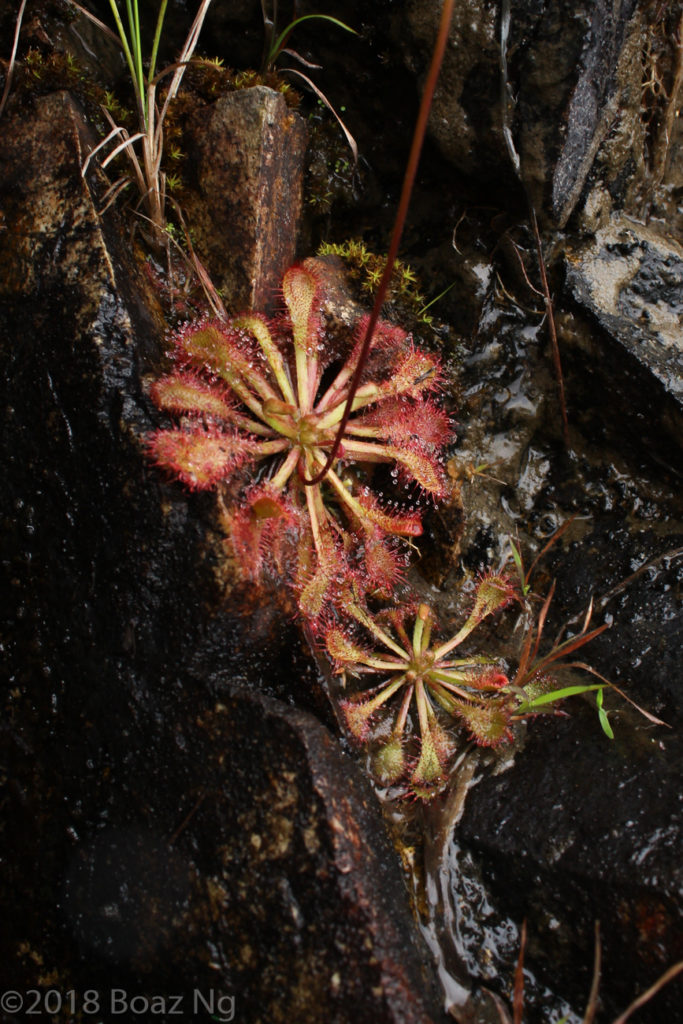
As a interesting side note, on Lantau Island, extensive gene flow occurs between D. oblanceolata and the closely related D. spatulata. On the lower elevations of Hong Kong, D. spatulata is common in streams whereas D. oblanceolata is absent. On the higher elevation slopes, both species can occur and fertile hybrids are extremely common. One such hybrid that is common in cultivation is Drosera sp. ‘Lantau Island’ and I was able to locate a similar specimen growing on a mid-elevation watercourse. It appears that the endemic variety of Drosera spatulata, a diminutive ruby red form is at risk of being outcompeted by the vigorous hybrids.
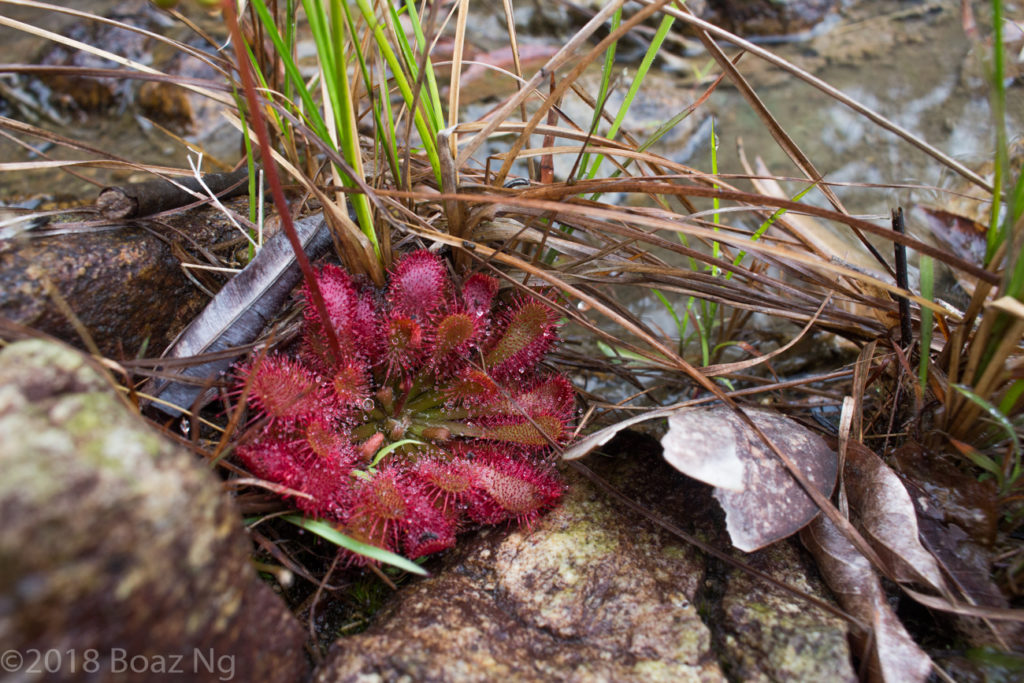
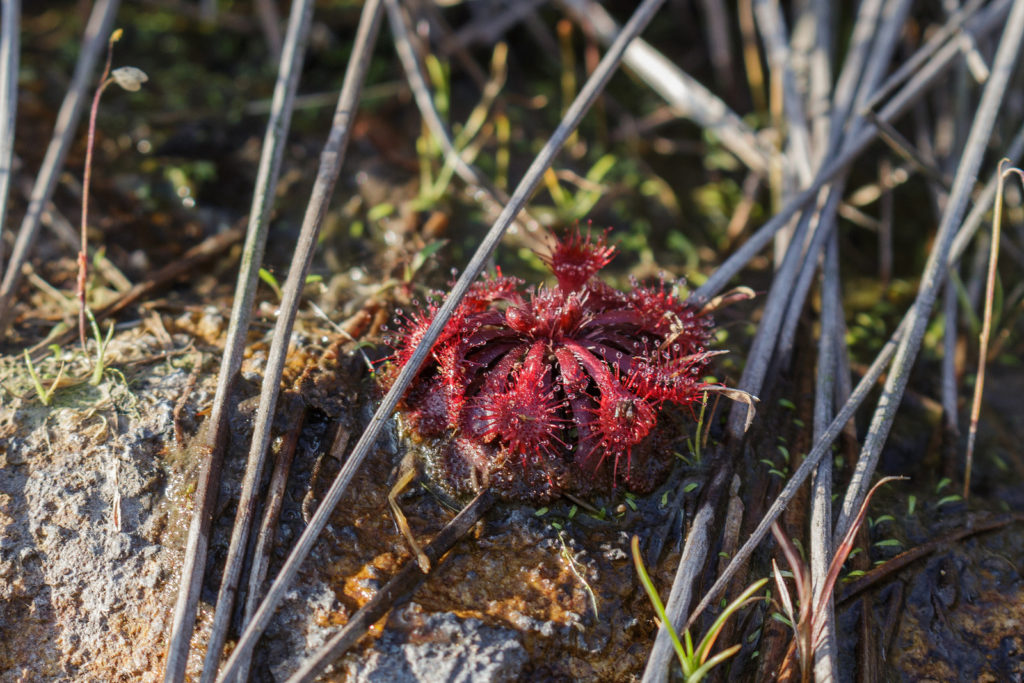
The plants of the summit area are even more convoluted. Pure D. spatulata seems to be absent here, but growing alongside the typical D. oblanceolata are fleshy looking plants that are probably of hybrid origin and selected for over many generations.These plants display a range of intermediate forms from flat to raised rosettes and narrow to wide petioles. I can’t speculate whether these plants represent multi-generational hybrids, retrogressed specimens or ancient intermediate lineages, but it’s certainly interesting to observe the process of evolution in the wild!
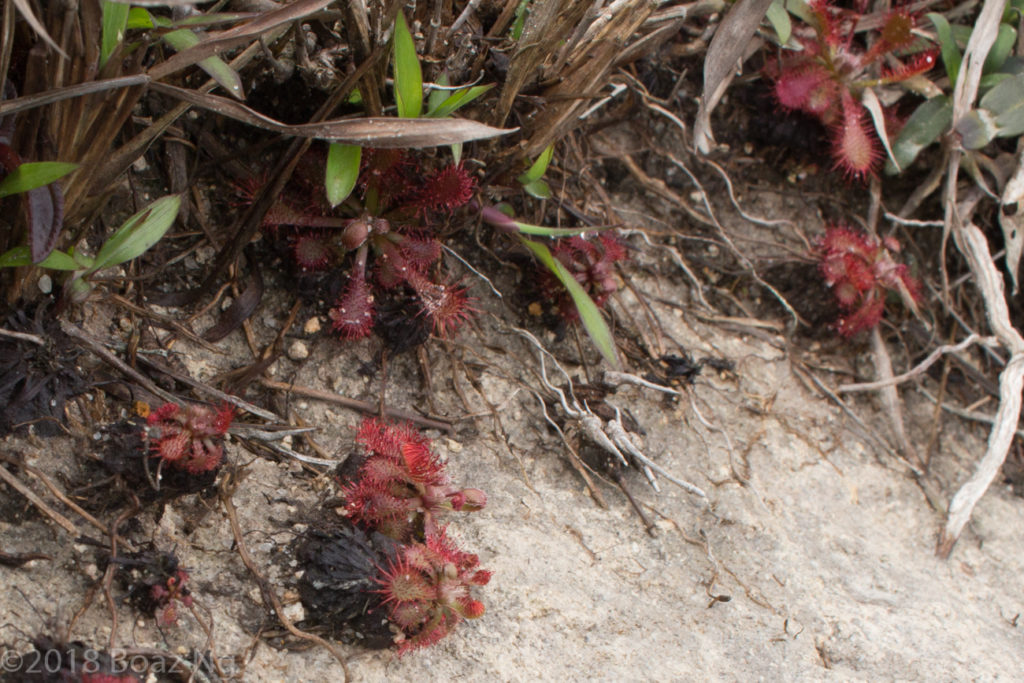
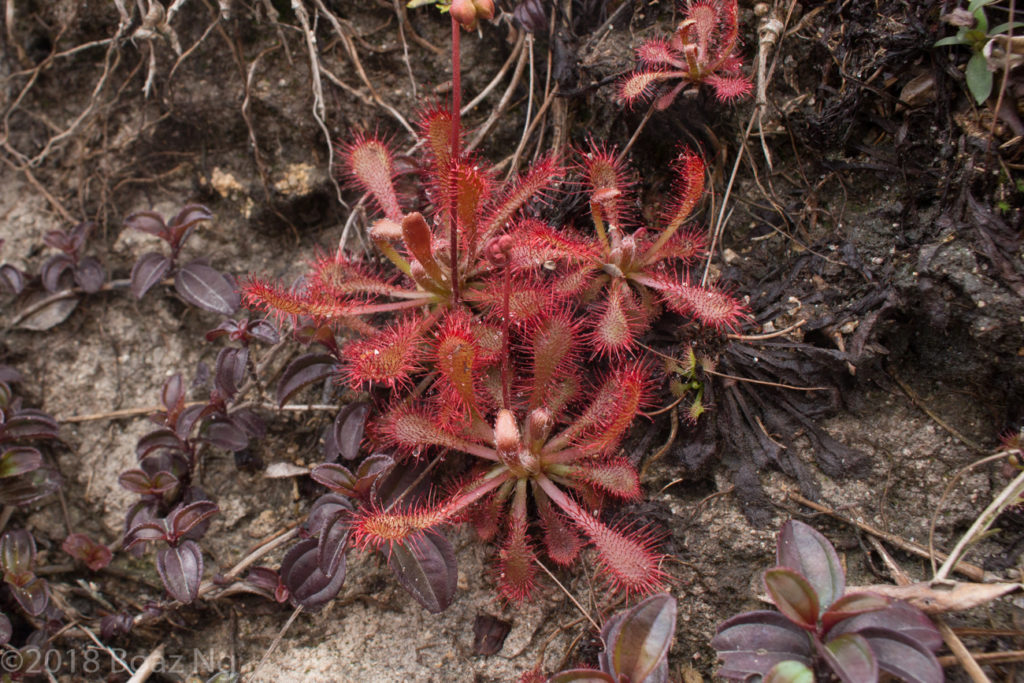
Drosera oblanceolata seems to be relatively secure in terms of conservation. The species is distributed across sharp several peaks which are unlikely to be developed soon. The main threat for this is probably habitat disturbance by walkers as some popular trails traverse the habitat. However, the range over which the natural hybrids between D. oblanceolata and D. spatulata occurs is restricted to a single peak as far as I know and warrants conservation efforts to protect this unique wilderness area in a city known for its aggressive urbanisation.
– Boaz
